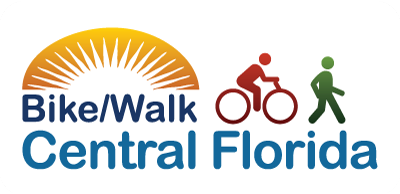 No one would argue that Metro Orlando roads will magically become safer for walkers and bicyclists. After all, two people are struck and killed each week while walking in Central Florida.
No one would argue that Metro Orlando roads will magically become safer for walkers and bicyclists. After all, two people are struck and killed each week while walking in Central Florida.
Getting the region off the list of having one of the most dangerous road systems in the nation will likely take years.
And even though the 2016 rankings released by Smart Growth America had Metro Orlando ranked as the third most dangerous place to walk in the country (down from number one), area leaders are still working hard to improve that dubious standing.
Last summer, the Winter Park Health Foundation gave eight area cities and county governments in Metro Orlando a $100,000 grant to help planners in Orange and Osceola counties, Casselberry, Kissimmee, Longwood, Orlando, Maitland and Winter Park. The goal was to coordinate efforts on constructing streets that will accommodate people walking, biking and using mass transit, not just those in cars and trucks.
The government officials learned about a concept called complete streets, said Emiko Atherton, director of the National Complete Streets Coalition for Smart Growth America.
Speaking at a recent MetroPlan Orlando board meeting, Atherton said bringing Complete Streets to the area is about more than making room for painted bike lanes or narrowing a road by adding parking spots.

Edgewater Drive in College Park was recognized as a National Complete Streets Model in 2015.
“It’s about creating a network, a community,” she said. “A Complete Streets approach can help people improve our health, our daily commutes, our local economies, and our communities.”
And although a Complete Street design is different for every community, “It’s also about reducing traffic speeds,” said Lisa Portelli, program director at Winter Park Health Foundation and a board member of Bike/Walk Central Florida.
“We all can help by slowing down when driving…you could save a life,” said Portelli, an avid cyclist.
Atherton said one of the keys to complete streets is doing the often mundane and seemingly thankless work of changing local building codes and rules to encourage more crosswalks, bike lanes and denser development that discourages sprawl. Other priorities include having shops and offices closer to the street, reducing traffic speeds, creating narrower roads and building fewer parking spots to discourage the use of cars and trucks.
“People want to interact,” Atherton said. “They want to be up close.”
Walkable and bike-friendly districts are more economically viable and attractive to the millennial generation, as well as aging Baby Boomers, she said.
“Drivers don’t make very good window shoppers,” she said.
Seminole County Commissioner and MetroPlan Chairman Bob Dallari said he wants Metro Orlando off the dangerous roads list — the sooner the better.
“I want to move the needle,” he said. “It’s not about moving traffic. It’s about moving people in all the different forms.”

